H0 scale, 1:87, model railway, the different systems
11.07.2013
Basically, there are two different main rail systems:
There are also two basic control systems; analogue and digital.
We first look at the "old fashion " analogue system.
In alphabetic order:
The AC system:
AC, for Alternating Current.
This is often referred to as the tree rail system. By many this
is called "the Märklin system".
The three rails refer to the two outer rails and a centre rail or contact studs.
This system have been used by Märklin since the introduction of the H0 scale in
1935.
Some other manufacturers also offers locomotives for the three-rail AC system.
The DC system:
DC, for Direct Current. This is often referred to as the two rail system.
The positive voltage is applied to one track,
the negative voltage in the other track.
Some more details:
AC system:
The driving current is applied to a centre rail, or contact points, both tracks
are connected to ground.
From Wikipedia
Driving speed:
The driving speed is altered by adjusting the applied voltage from the
controller or transformer, between approx 4 and 16 VAC. All the
locomotives on the track travels at approximately the same speed.
Driving direction:
The driving direction is changed by applying a 24 Volt pulse to the locomotive,
activating a reversing unit in the locomotive.
This means that the driving direction is controlled in each locomotive.
The DC system:
The two rails are insulated from each other. Plus is applied to one
track, minus to the other track.
Driving speed:
The speed is altered by adjusting the applied voltage from the controller or
transformer. All the locomotives on the track travels at approximately the
same speed and in the same direction.
Driving direction:
The driving direction is changed by reversing the polarity of the tracks.
All locomotives on the track travel in the same direction.
Note:
the above information about speed and direction refers to the "old fashion"
analogue systems.
Most manufacturers offers digital control systems, where the power supply are
different kinds of digital pulses, which combines power supply and digital
information.
The track system and the locomotive layout remains the same
Analogue operation:
AC system:
The power is controlled by an adjustable transformer, applying the requested AC
current to the three rails.
Approx 4 to 16 Volts for driving, approx 24 Volts for direction change.
All the locomotives on a track will run at approx. the same speed, but the
direction is depending on the electro-mechanically changeover unit (reversing
unit) in the locomotives.
DC system:
The power and polarity is controlled by an adjustable transformer, applying the
requested DC voltage and polarity to the two tracks. All the locomotives
on a track will run in the same direction an approx. the same speed.
Note:
Analogue AC locomotives from other manufacturers than Märklin often have a small
electronic device, not the normal reversing unit found in Märklin locomotives.
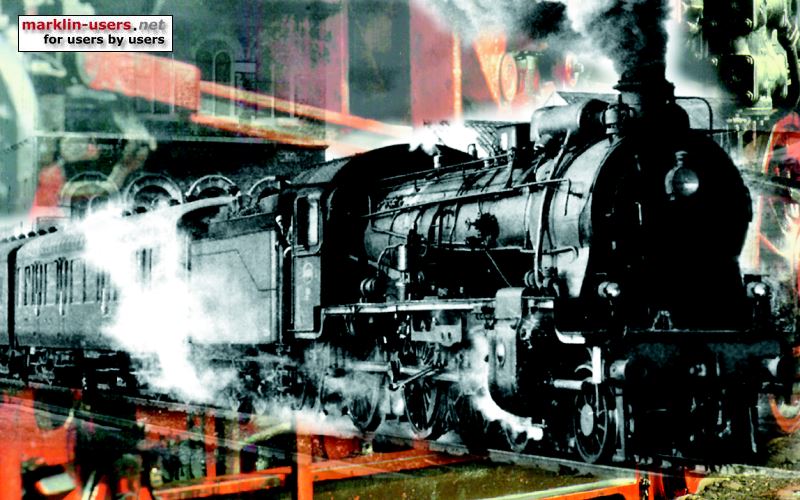
This is also the fact for a few Märklin locomotives with DC motors, as this
Märklin 3118. They are not digital compatible.
Digital operation:
Basically, the system could be the same, regardless of two-rail or three-rail
operation.
But, the different manufacturers have their own systems, that do not comply.
They all have different communication protocols.
Digital operation requires a digital train controller and a decoder in each
locomotive. The controller and the decoders must have the same protocol to
be able to communicate.
Locomotive layout:
AC system:
All the wheels are connected to the locomotive chassis, the wheel axels are not
insulated (short circuit, if placed on a DC track). A slider, also called
pick-up shoe; is installed under the locomotive, between the wheels. The
slider is insulated from the rest of the locomotive.
DC system:
The two wheels on each axel are electrically insulated, as the two wheels are
running on a rails with different electric polarity. The wheels on one
side of the locomotive are electrically connected, normally via a contact plate
touching the inside of each wheel. So are the wheels on the other side of
the locomotive.
The contact plates are connected to the brushes on the electric motor (with
permanent magnets) or eventually to the decoder.
A Märklin AC locomotive:
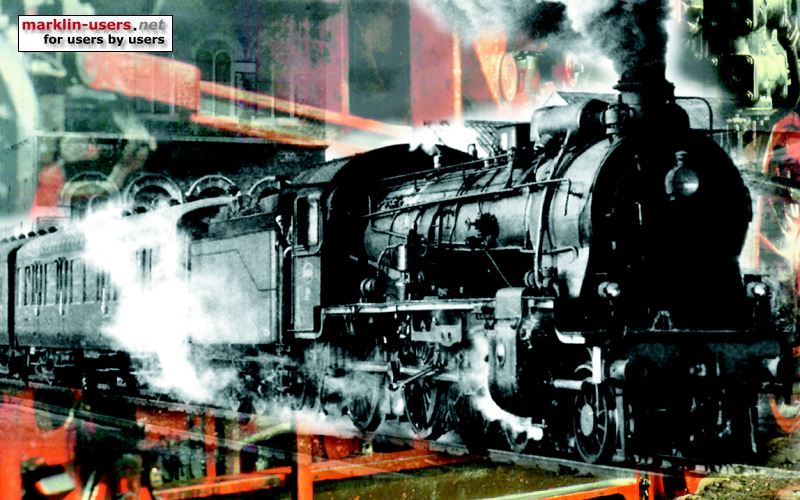
All the wheels are connected to the chassis, as ground, the slider (or pick-up
shoe) picks up the current from the centre contact points.
This is a drawing found on internet, once made by Märklin, of a
traditional analogue locomotive with an electro mechanical reversing unt
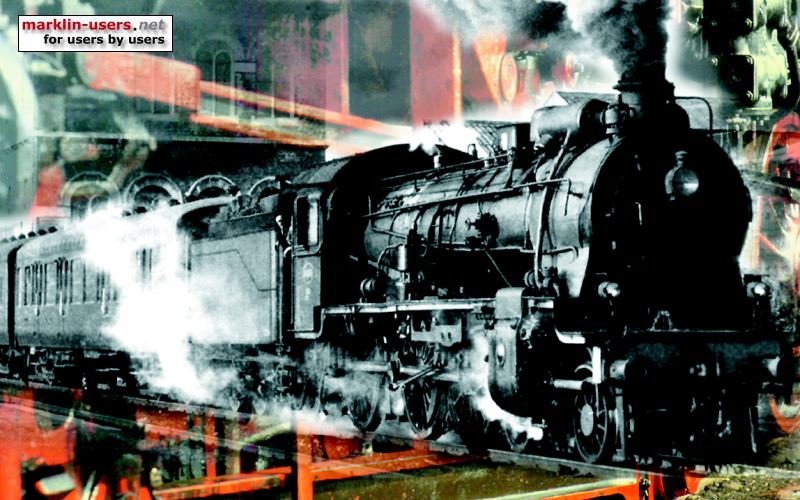
| 1 center rail (studs) |
5 brushes |
9 reversing unit magnet |
13 rocker contact |
| 2 pick-up shoe (slider) |
6 motor field magnet |
10 reversing unit armature |
14 light bulb |
| 3 FM choke |
7 rotor |
11 reversing unit return spring |
15 locomotive chassis |
| 4 main solder point |
8 rotor shaft |
12 reversing unit slider |
|
During normal operation, 4 to 16 Volt AC, the current flows from the slider to
the main solder point, to the lamp, reversing unit magnet and to the front motor
brush.
The lamp glows with an intensity according to the applied voltage.
The reversing unit magnet creates a magnetic field, but the return spring is
stronger than the magnetic field; the slider does not move and the rocker stays
in it's position.
The front motor brush applies a voltage to the rotor. The current flows
through the rotor, to the rear brush and continues to the lower part of the
double motor field magnet. From the field magnet to the rocker to ground
(chassis)
When applying the short 24 Volt AC pulse for direction change, the
reversing magnet becomes stronger than the return spring. The reversing
unit armature moves towards the magnet and the slider flips the rocker contact
to the opposite position, thus changing the current flow from the one half of
the motor magnetic field to the other.
This way the motor magnetic field flips 180 degrees (north becomes south and
vice versa) while the current flow through the rotor remains the same. The
turning direction of the AC motor changes.
An analogue Märklin locomotive:
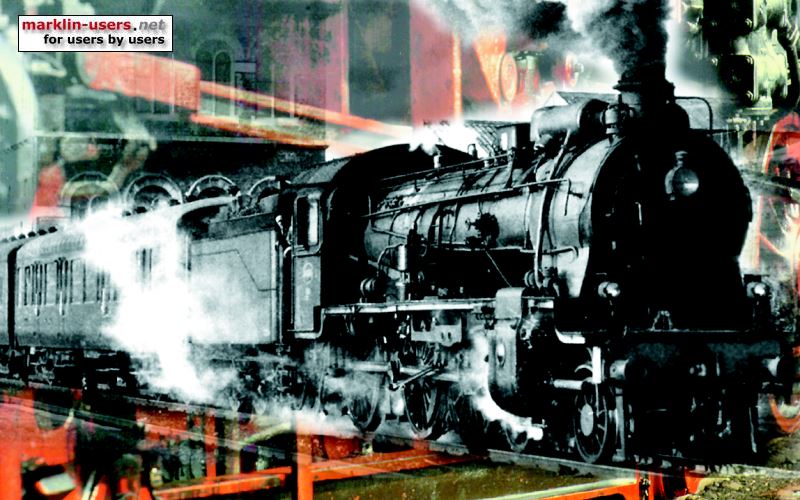
In this case the locomotive includes a small electronic unit controlling the
front lights and the reversing unit.
Digital locomtives:
In a digital locomotive the reversing unit is replaced by a digitally operated
decoder, which converts the power supply to the correct motor voltage and light
operation, controlled by digital pulses constantly applied to the track.
driving speed and direction is controlled in the locomotive.
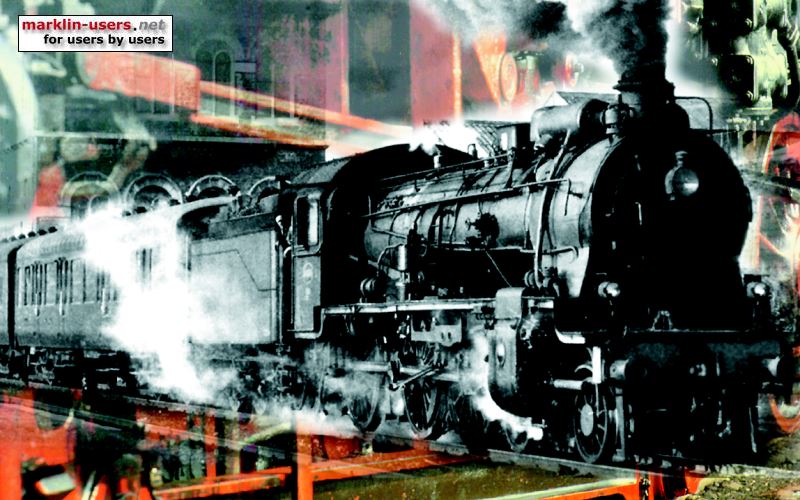
There are many different types of decoders, see my pages about digital
conversions.
Home




